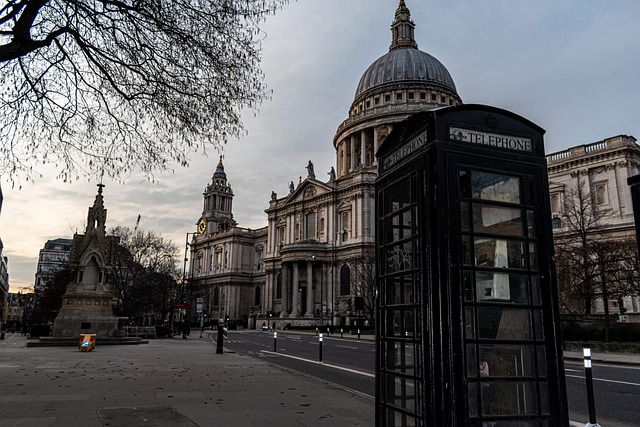The KDA Scheme 1 in Karachi is a comprehensive urban renewal project by the Karachi Development Authority, integrating traditional heritage with modern design. It aims to revitalize public spaces, improve transportation, and introduce amenities across neighborhoods. A significant aspect of this scheme focuses on enhancing mosques as community hubs, promoting sustainability, and cultural exchange. These mosques not only serve as places of worship but also host educational and health events, becoming integral parts of Karachi's vibrant urban landscape. By leveraging digital tools and innovative strategies, mosques can overcome challenges related to rapid urbanization and cultural diversity, fostering social cohesion and community engagement in the ever-changing city of Karachi.
Karachi, Pakistan’s vibrant metropolis, has witnessed significant urban growth, and its mosques play a pivotal role in shaping the city’s religious and cultural landscape. This article explores the KDA Scheme 1, a transformative initiative aimed at enhancing mosque development across Karachi. We delve into the key features and benefits of this scheme, its positive impact on local communities, and the potential challenges it faces while also highlighting future prospects for similar mosque initiatives in the bustling city of Karachi.
- Understanding the KDA Scheme 1 in Karachi: A Brief Overview
- Key Features and Benefits for Mosque Development
- The Impact on Local Communities and Urban Landscape
- Challenges and Future Prospects for Mosque Initiatives in Karachi
Understanding the KDA Scheme 1 in Karachi: A Brief Overview

In Karachi, the KDA Scheme 1 is a significant urban planning and development initiative aimed at enhancing the city’s infrastructure and quality of life. This scheme, part of the Karachi Development Authority (KDA), focuses on revamping public spaces, improving transportation networks, and introducing modern amenities to various neighborhoods. It involves the construction and renovation of roads, parks, sports complexes, and other recreational facilities, making Karachi more livable and attractive.
The KDA Scheme 1 is not just about physical changes; it’s a comprehensive strategy to integrate traditional elements with contemporary design, preserving Karachi’s rich heritage while accommodating its burgeoning population. By prioritizing accessibility, sustainability, and community engagement, this initiative promises to transform various areas of the city, offering residents and visitors alike an improved urban experience.
Key Features and Benefits for Mosque Development

The Karachi Development Authority (KDA) Scheme 1 offers a unique opportunity for the enhancement and expansion of mosques in the vibrant city of Karachi. This initiative boasts several key features designed to benefit the local Muslim community and preserve the rich religious heritage of the region. One of its standout advantages is the provision of dedicated spaces for worship, ensuring that mosques can be constructed with ample area for prayer halls, community gatherings, and educational facilities.
Additionally, the scheme promotes sustainable development by incorporating modern architectural designs and energy-efficient systems. This not only contributes to a greener environment but also provides a more comfortable and accessible space for worshippers. With KDA Scheme 1, mosques in Karachi can become multifaceted centers that cater to spiritual needs while fostering community engagement and cultural exchange, making them true hubs of religious and social life.
The Impact on Local Communities and Urban Landscape

The KDA Scheme 1 mosques in Karachi have significantly impacted local communities, serving as more than just places of worship. They’ve become community hubs, fostering social cohesion and enhancing the urban landscape. These mosques often double as cultural centers, hosting events that promote education, health awareness, and cultural exchange, thereby strengthening the social fabric of the city.
The architectural beauty of these mosques adds a vibrant tapestry to Karachi’s skyline, reflecting the city’s rich cultural diversity. They stand as prominent landmarks, not just guiding spiritual seekers but also attracting tourists interested in exploring the region’s historical and artistic heritage. The positive impact extends beyond aesthetics; mosques facilitate access to essential services like healthcare and education, making them integral parts of the urban community ecosystem.
Challenges and Future Prospects for Mosque Initiatives in Karachi

Karachi, as a vibrant and bustling metropolis, presents unique challenges for mosque initiatives aiming to cater to its diverse population. The city’s rapid urbanisation and cultural heterogeneity require innovative strategies to engage communities and ensure the sustainability of mosque activities. One significant challenge is reaching out to marginalized groups and ensuring inclusivity, especially in areas with limited access to resources.
Looking ahead, there is a promising future for mosque-based initiatives in Karachi. By adopting digital tools and modern approaches, mosques can enhance their community engagement, educational programs, and social services. This includes leveraging technology for remote worship, providing online learning platforms, and utilizing data to understand the needs of different segments of the population. With careful planning and adaptability, these institutions can play a pivotal role in fostering social cohesion, promoting cultural understanding, and becoming vibrant centers of community life in the ever-evolving cityscape of Karachi.
The KDA Scheme 1 in Karachi has emerged as a transformative initiative, offering significant benefits for mosque development. By leveraging its key features, such as streamlined approval processes and financial support, the scheme has positively impacted local communities and the urban landscape. While challenges remain, the future prospects for mosque initiatives in Karachi look promising, with the potential to foster greater social cohesion and cultural heritage through continued innovation and collaboration.

Leave a Reply